




Source: State of global air, 202017
| Pollutant | Averaging Time | 2005 AQGs | 2021 AQGs |
|---|---|---|---|
| PM2.5 | Annual | 10 | 5 |
| 24-hour | 25 | 15 | |
| PM10 | Annual | 20 | 15 |
| 24-hour | 50 | 45 | |
| Ozone (O3) | Peak Season | - | 60 |
| 8-hour | 100 | 100 | |
| Nitrogen oxide | Annual | 40 | 10 |
| 24-hour | - | 25 | |
| Sulphur dioxide | 24-hour | 20 | 40 |
| Carbon Monoxide | 24-hour | - | 4 |
Source: IQAir29
* New averaging time for 2021 | + Peak season - average of daily maximum 8-hour mean ozone concentration during the six consecutive months with the highest six-month running-average of ozone concentration NO2 1-hour average, SO2 10 minute average, and CO2 8-hour, 1-hour, and 15-minute averages unchanged from previous recommendations. Source: World Health Organization
renewables vs conventional, % share, Asia
Source: IJGlobal, 2019137
Asia in Focus:
Clean Air
and
the business
and human
rights agenda

Asia in Focus:
Clean Air
and
the business
and human
rights agenda

 Current mitigation measures
Current mitigation measures
Governments in the Asia-Pacific region are adopting and implementing policies that are reducing pollution levels and will likely continue to do so in future. Without these policy interventions, population-weighted exposure to harmful particulate matter was expected to grow by more than 50% by 2030, based on the region’s projected 80% economic growth.102

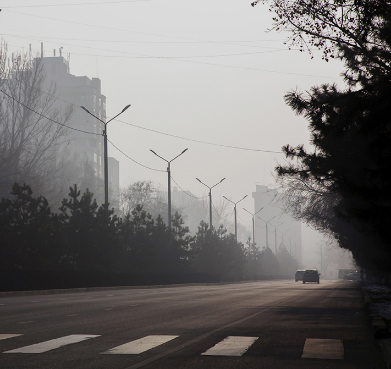
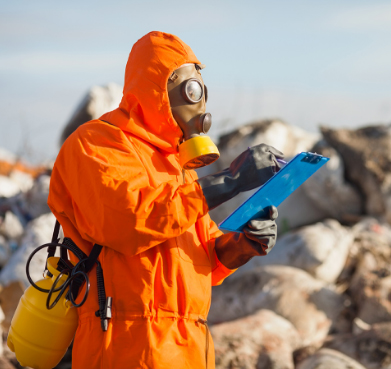
Air pollution mitigation strategies adopted across Asia can be broadly divided into the following categories: vehicular emission standards, energy policies, air quality monitoring and transboundary haze.
Regional measures
The table below describes the regional agreements in place to address transboundary haze.
Signed in 2002 and enforced in 2003, the AATHP was the first regional agreement that brought together a group of contiguous States to tackle transboundary haze pollution emanating from land and forest fires.
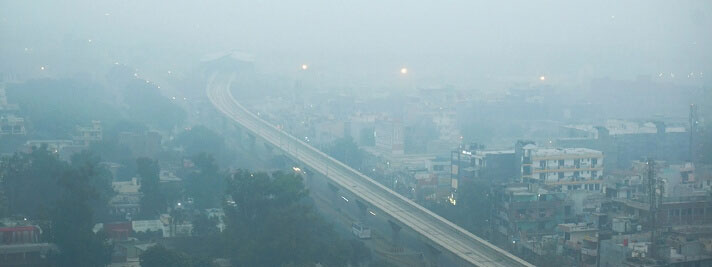
Signed in 2003, the APMI was established to provide a framework for regional cooperation and to discuss measures related to capacity building and fire prevention. The key output of the APMI was a regional strategy for peatland management, the APMS.

The APMS was adopted in 2013 and focuses on the following objectives:103
Enhancing awareness and knowledge of peatlands
Addressing transboundary haze pollution and environmental degradation
Promoting sustainable management of peatlands
Enhancing and promoting collective regional cooperation on peatland issues.
According to some advocates, the ASEAN Agreement on Transboundary Haze Pollution has not yet achieved the desired result of reducing transboundary haze. This is primarily because the agreement lacks the power to penalise countries for non-compliance. Day-to-day management of the environmental agenda remains the responsibility of each ASEAN Member State. In this respect, there is something to learn from the enforceable protocols of the Long-Range Transboundary Air-Pollution (LRTAP) treaty signed in 1979 by 32 European countries. The LRTAP resulted in a successful reduction in concentrations of particulate matter through active engagement between scientists and policymakers.

Transboundary air pollution in South-East Asia104
The ASEAN Agreement on Transboundary Haze Pollution (AATHP) was signed in 2002 and ratified by six members, Brunei, Malaysia, Myanmar, Singapore, Thailand and Vietnam. Indonesia ratified the agreement in 2015.
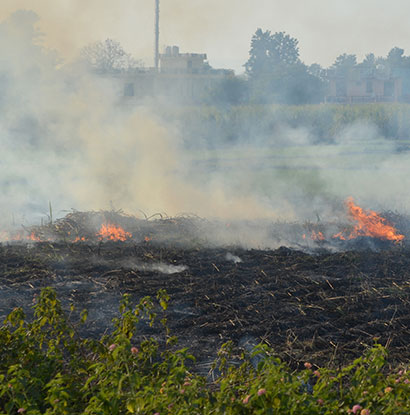
Transboundary haze pollution is a recurring event in
South-East Asia, mainly caused by the use of fires to clear vegetation for
growing agricultural or cash crops such as corn, and palm oil, rubber or
pulpwood. In the absence of legal restrictions in some South-East Asian
countries, fires have become a cheap and convenient way to clear forests or
agricultural land. This large-scale burning causes major episodes of
transboundary haze that travels across borders and into
neighbouring countries.
The Association of South-East Asian Nations (ASEAN) has been working to address
the issue of transboundary haze pollution since 1995 when it established the
Haze Technical Task Force.
The ASEAN Agreement on Transboundary Haze Pollution (AATHP) was signed in 2002 and ratified by six members, Brunei, Malaysia, Myanmar, Singapore, Thailand and Vietnam. Indonesia ratified the agreement in 2015.
The AATHP has several institutional provisions to support actions around managing haze pollution emanating from land/forest fires in the region. However, despite the existence of this legal framework, much remains to be done by member countries as severe haze events have continued in the region over the past decade.
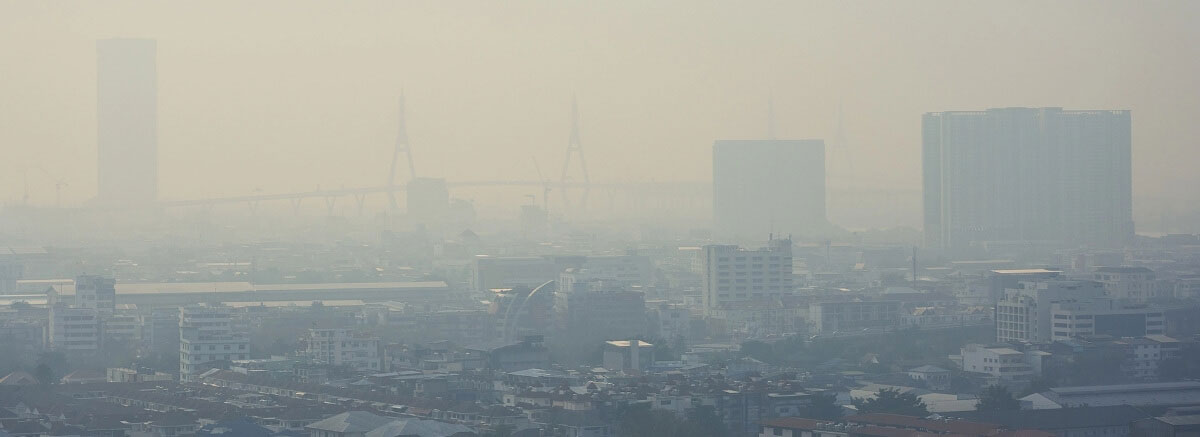
According to Greenpeace South-East Asia, the AATHP has not been effective.105 A key shortcoming of the agreement is the lack of a provision for penalties for non-compliance with the stipulated obligations. Despite almost annual occurrences of haze, regional governments have only raised concerns surrounding the lack of action in originating countries.
Country-level measures
The table below summarises key mitigation measures that have been implemented to control air pollution in select Asian countries.
Focus country
Indonesia 
Measure
In 2017, the government required that all gasoline-fuelled vehicles adopt Euro-4 fuel standards by September 2018.106
The Peatland Restoration Agency (BRG) was established in 2016 after a markedly severe haze season in 2015 with the aim of restoring over 2.6 million hectares of forest and peatlands devastated by the 2015 fires.107
Presidential Regulation No. 5/2006 concerning National Energy Policy sets the energy mix target for 2025, calling for a reduction of fossil oil from 52% in 2003 to 26.2% in 2025.108
From 2016 to 2020, Indonesia’s public real-time air quality monitoring network grew from a few monitors in Jakarta to 77 stations across 19 cities.109
Thiland 
Measure
The UNEP is collaborating with the Pollution Control Department (PCD) to leapfrog from Euro-4 vehicle emission standards to Euro-6.110
The PCD coordinates with provincial governments to help them during times of peak pollution. For example, it is helping to find solutions to open burning by developing an air quality forecasting tool that could help to identify the appropriate weather conditions for burning to occur.111
From 2017 to 2020, Thailand’s public air quality monitoring network grew from 54 to 565 stations. While the Thai government provides the region’s largest monitoring network, non-governmental contributors operate 73% of monitoring stations nationally.112
Bangkok plans to amend regulations to allow access to electricity chargers at petrol stations. The excise tax on electric vehicle components has been decreased by 10% as part of a plan to promote electric vehicles in Thailand.113
Vietnam 
Measure
On June 1, 2016, the prime minister approved a national action plan on air quality management.
Vietnam’s air quality monitoring network more than doubled between 2019 and 2020, growing from 54 monitoring stations across four cities to 118 stations across 24 cities.114
In 2019, Can Tho became the first Vietnamese city to join the worldwide BreatheLife Network, committing to reaching WHO air quality guidelines for PM2.5 and other pollutants by 2030. With this commitment, Vietnam’s fourth-largest city set an air quality control precedent for other Vietnamese cities to follow.115
On April 13, 2022, the prime minister approved the National environmental protection strategy, which includes air quality control standards, targets and timelines.
India 
Measure
In April 2020, the Euro-6 standards came into effect throughout India for all light and heavy-duty vehicles, as well as two- and three-wheeled vehicles.116
The Pradhan Mantri Ujjwala Yojana (PMUY) scheme resulted in an increase in national LPG coverage from 61.9% as of April 1, 2016, to 99.5% as of January 1, 2021, and provided 50 million LPG connections to households with incomes below the poverty line.117
The Graded Response Action Plan (GRAP) was adopted in Delhi to tackle pollution control in the National Capital Territory. Polluters are reportedly facing increasing levels of accountability.118
The National Clean Air Programme (NCAP) is India’s flagship scheme for improving air quality. From a 2017 baseline, the NCAP targets PM2.5 reductions of 20-30% in 122 selected cities by 2024.119
Mongolia 
Measure
Air quality monitoring in Mongolia is growing rapidly, largely due to non-governmental organisations and individuals whose community-deployed sensors now supply two-thirds of the national data. There is a high concentration of stations in Ulaanbaatar, which, with 40 stations, has quickly become one of the most densely monitored cities globally.120
In May 2019, the government implemented a ban on the burning of raw coal. This has led to a 46% reduction in emissions since implementation.121
Mongolia’s excise tax favours electric and hybrid vehicles.
Malaysia 
Measure
The Ministry of Environment and Water (KASA) has made a strong push for a greener economy in its Strategic Plan 2020-2030: Environmental Sustainability in Malaysia, with improving air quality being among the top ten national priorities.122
Malaysia has made progress in tackling local sources of burning through increased governmental cooperation and a well-developed air quality monitoring network.123
Philippines 
Measure
The proposed National Renewable Energy Programme (NREP) 2020-2040 set targets of 35% renewable energy in the power generation mix by 2030, and 50% by 2040.124
The Philippines Department of Transportation launched the Public Utility Vehicle (PUV) Modernisation Programme in 2017 with the objective of a comprehensive modernisation of public road vehicles in the Philippines, including jeepneys and buses.125
The road-sharing movement "Bayanihan sa Daan" seeks to set aside half of the road for non-motorised transportation, safe and covered sidewalks and all-weather bike lanes while reserving the other half for an organised transport system.126
Sri Lanka 
Measure
The purported aim of Sri Lanka’s Clean Air 2025 action plan is to reduce urban, industrial and indoor air pollution and maintain air quality at desirable levels by minimising the emission of harmful air pollutants.127
Sri Lanka has taken steps to reduce transport-related pollution, including the phasing out of leaded gasoline in June 2002, the introduction of low-sulphur diesel in January 2003, the banning of two-stroke three-wheeled imports in 2008, and the launch of a vehicular emissions testing programme in 2008.128
Bangladesh 
Measure
The government's 8th Five Year Plan (July 2020 – June 2025) places significant emphasis on addressing urban air pollution through proposed targets for the reduction of particulate matter levels, taxes on polluting industries and mechanisms for data storage and monitoring.129
The Brick Manufacturing and Kiln Installation Act 2013 prohibited the building of brick kilns in residential, preserved or commercial areas. The act was amended in 2019 to make mandatory use of block bricks and introduced phased targets to reduce the use of clay-fired bricks over 2019-2025.130
By some measures, China’s efforts to stem the impact of air pollution sets an important standard to inform mitigation measures taken elsewhere in the region. In 2014, the Chinese government declared a ‘war on pollution’, implementing a number of stringent measures to regulate fine particulate matter (PM2.5) emissions. Between 2014 and 2019, Beijing witnessed a 21% decline in the concentration of particulate matter, while Shanghai witnessed a 31% decline. Though there is more to be done, the measures adopted by the Chinese government set a new standard of commitment and action in the region.
China’s war on air pollution
A timeline charting the Chinese government’s efforts to improve air quality:
2013: Government launches the Air Pollution Prevention and Control Action Plan
This five-year plan set the following targets to be achieved by 2017:131
Reduce total PM2.5 concentration levels by at least 10% (compared with 2012 levels) in all areas except the following three clusters, where higher reduction targets apply: Beijing-Tianjin-Hebei (25%); Yangtze River Delta (20%) and Pearl River Delta (15%)
Implement fuel standards for gasoline and diesel, mandating sulphur content to be less than 10 micrograms per gram
Decommission 15 million polluting motor vehicles
Ensure new or upgraded public buses in Beijing, Shanghai and Guangzhou are non-fossil fuelled
Reduce the share of coal in the country’s energy mix from 68% to 65%
Accelerate the monitoring and disclosing of PM2.5 readings across all cities
2014: Government declares a ‘war on pollution’—including air pollution.
The government introduced several stringent measures and regulatory changes to tackle the challenge of air pollution. These included:
Recognising PM2.5 as a primary pollutant and establishing national maximum limits
Initiating a national level, real-time air quality monitoring and disclosure programme
Executing environmental policies that included pilot carbon cap-and-trade programmes and electrification of the passenger transportation system
Expanding the number of air quality monitoring stations across the country
Placing restrictions on the number of on-road vehicles
Replacing coal-fired power plants with natural gas plants132
2018: Government launches Three-year Action Plan for Winning the Blue Sky War133
The Three-year Action Plan for Winning the Blue Sky War expanded the number of cities under coverage (compared with the Air Pollution Control Action Plan 2013-2017) and set the following key targets to be achieved by 2020:
Reduce PM2.5 concentration levels by at least 18% (compared with 2015 levels) in cities where previous targets have not been met
Reduce volatile organic compound (VOC) emissions by 10% and nitrogen oxide emissions by 15% to control ozone pollution
Reduce pollutant emissions ‘in conjunction with’ a reduction in greenhouse gas emissions
2021: Government launches its latest five-year plan
(2021-2025)134
This plan outlines various pollution-oriented goals:
Sets a target of ‘basically eliminating’ heavy air pollution days by 2025
Major push for clean energy, with a target of 20% non-fossil energy in total energy consumption, and a target to reduce the CO2 emissions per unit of GDP by 18% between 2020 and 2025
Coal consumption capped at 4.2 billion tonnes in 2025—close to the current consumption levels
A nuclear power capacity target of 70GW in 2025, up from 52GW currently
2021: Government launches Human Rights Action Plan of China (2021-2025)135
Under this plan, further action will be taken to:
Prevent and control atmospheric pollution and coordinate the government’s commitments to reducing air pollutants and greenhouse gas emissions
Improve the eco-environmental legal system, strengthen government information releases and improve law-based disclosure of corporate information
Formulate and enforce environmental impact evaluation law and implement measures to facilitate public participation in environmental impact evaluation
Encourage and expand the scope of public-interest environmental litigation
Adopt a holistic approach to eco-environmental restoration and protection
Source: Energy Policy Institute, University of Chicago (2018), The Air Quality Life Index.136
Speeding up the energy transition for better air quality
Business enterprises involved in thermal energy production are among the largest direct contributors to air pollution. The burning of coal for energy is a leading cause of both climate change and air pollution and of the world’s three largest coal-consuming countries, two are found in Asia. By transitioning away from fossil-fuel-powered energy to renewable energy sources, businesses can reduce their contribution to air pollution and address human rights abuses that arise as a direct result of their operations. The State can facilitate the acceleration of this transition by incentivising investments in renewable energy projects and by holding energy firms accountable for adverse impacts on the right to a clean, healthy and sustainable environment.
The transition from conventional power to renewables can help to significantly reduce air pollution from energy generation in Asia.
By transitioning away from fossil-fuel-powered energy to renewable energy sources, businesses can reduce their contribution to air pollution and address human rights abuses that arise as a direct result of their operations. The State can facilitate the acceleration of this transition by incentivising investments in renewable energy projects and by holding energy firms accountable for adverse impacts on the right to a clean, healthy and sustainable environment.
Investments in energy infrastructure,
renewables vs conventional, % share, Asia
Drag the year slider to compare
Source: IJGlobal, 2019137
Source: IJGlobal, 2019137
Source: Bloomberg League Tables, 2021138
There is growing evidence of increased interest from private investment firms in financing renewable sector projects. Since the signing of the Paris Agreement in 2015, bank lending to the green sector, which includes renewable energy, among other climate-friendly ventures, has more than quadrupled—from US$68bn in 2015 to US$323bn in 2020. By contrast, investments in fossil fuels—oil, gas and coal-related investments—have been on a downward trend since 2018.
Another important trend involves private sector players stepping in as corporate purchasers of renewable energy. Traditionally, the key purchasers for most energy projects are State-owned energy utilities. However, today multinational companies are signing corporate power purchase agreements (corporate PPAs) to purchase power directly from renewable energy producers in a bid to reduce their carbon footprint.
60MW
In 2018, Microsoft signed a corporate PPA with the Sunseap Group in Singapore to purchase 100% of the electricity generated by its 60MW solar rooftop portfolio.
While this trend has been prevalent in the Americas and Europe, Middle East and Africa regions since 2013, corporate energy purchasing is now gaining pace in the Asia-Pacific region. For example, in January 2019, Google signed a long-term corporate PPA (>10 years) where it agreed to purchase electricity from a 10MW solar farm in Tainan City for its Changhua data centre. In 2018, Microsoft signed a corporate PPA with the Sunseap Group in Singapore to purchase 100% of the electricity generated by its 60MW solar rooftop portfolio. Through 2018 and 2019, Australia has witnessed a number of corporations, such as Telstra, Kellogg and Coca-Cola Amatil, signing up to purchase wind and solar power.
While these steps were primarily implemented to reduce their carbon footprint, the move to renewable energy can drive down demand for electricity derived from air-polluting coal.139
Emissions trading scheme for particulate matter – Surat, India
The pilot scheme started operating in September 2019. It aims to reduce particulate emissions by 29%.
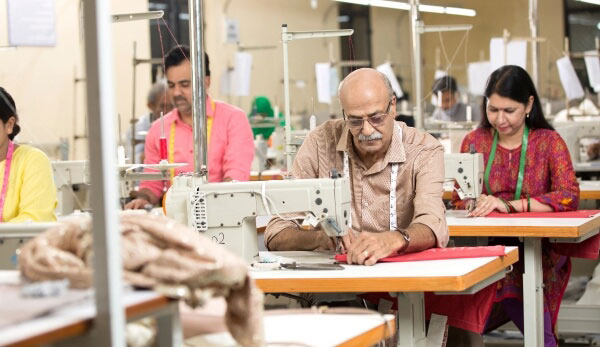
Surat, an industrial city in India known for its vibrant textile manufacturing industry, witnessed the launch of a global first in controlling air pollution: an emissions trading scheme for particulate matter. The scheme was implemented by the Gujarat Pollution Control Board in coordination with researchers from the University of Chicago, Yale University and the Abdul Latif Jameel Poverty Action Lab (J-PAL).
The emissions ceiling set by the Emissions Trading Scheme (ETS) is equal to the amount of air pollution that would have been released if all industrial units had complied with the norm of 280 tonnes per month.140 Hence, the ETS monthly cap was set at 280 tonnes per industrial unit. Participating units can comply by either cutting their particulate matter emissions using appropriate technology or by purchasing emission permits to emit more than the government-specified limit. Units with surplus permits can sell excess permits to more polluting units for whom it is more expensive to install pollution-reducing technology.141 Existing pollution control measures involve installing bag filters and cyclone equipment to comply with pollution norms. Under the ETS, the average cost of reducing 1kg of particulate pollution was found to be less than the cost of installing the pollution control equipment.142

The scheme is projected to foster economic growth by reducing compliance costs for industries and improving people’s health by reducing particulate air pollution. Preliminary results indicate that pollution emissions witnessed a 24% decline among participating factories compared with the control units.143
Leveraging trade policy to mitigate air pollution
Another potentially powerful tool States can leverage to mitigate air pollution is trade policy. Trade policy is an engine for inclusive economic growth and poverty reduction, but trade expansion can also lead to higher levels of pollution, particularly in countries with less stringent environmental policies. By contrast, research suggests that when preferential trade agreements (PTAs) include environmental provisions, they can promote domestic environmental legislation, which leads to a reduction in air pollution and emissions.144
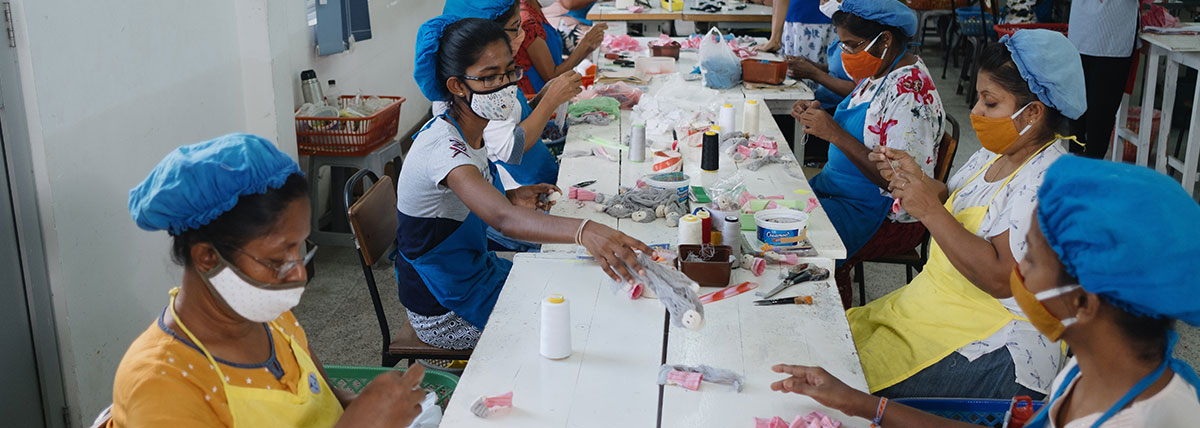
Source: UNDP Sri Lanka
India's climateSMART city mission – measuring air quality
The inclusion of air- and climate-relevant parameters place green measures at the heart of the Smart City framework, an indicator of the government’s commitment to improving air quality as cities develop and grow.
The inclusion of air quality as an indicator in India's climateSMART Cities Assessment Framework145 aims to embed a green mindset in cities. The framework has five main pillars and a total of 28 indicators. ‘Mobility and air quality’ is a standalone pillar with five indicators that measure existing air pollution levels and clean air action plans.
The five indicators under the pillar of ‘Mobility and air quality' are:146

Clean Air Action Plan (Planning and Implementation)
Level of air pollution
Non-motorised transport network coverage (pedestrian and bicycle)
Availability of public transport
Clean technology-shared vehicles
The framework currently applies to 100 cities included in the Smart City Mission.
"By mandating that all smart cities monitor air quality and have a clean air action plan in place, it works very well for cities as it directly focuses on mitigation."
- Prarthana Borah, Director, CDP India

References
X1 https://www.ccacoalition.org/en/content/air-pollution-measures-asia-and-pacific
3 For the full list of UNGPs, see > https://www.ohchr.org/sites/default/files/documents/publications/guidingprinciplesbusinesshr_en.pdf
5 Greenpeace Southeast Asia and Centre for Research on Energy and Clean Air
6 https://www.ncbi.nlm.nih.gov/pmc/articles/PMC6923778/#B3
8 https://twitter.com/hp_tourism/status/1246017228274728960
10 https://www.who.int/news/item/04-04-2022-billions-of-people-still-breathe-unhealthy-air-new-who-data
11 https://www.ccacoalition.org/en/content/air-pollution-measures-asia-and-pacific
12 https://timesofindia.indiatimes.com/india/india-third-most-polluted-country-delhi-most-polluted-capital-report/articleshow/81537532
world-air-quality-report-2020-en-pdf
(2020 Report-English -
page 4, section on Executive summary) More recent data is available from the same source but was
released after the report went into production.
13 US AQI >100 https://www.airnow.gov/aqi/aqi-basics/#:~:text=Think%20of%20the%20AQI%20as,300%20represents%20hazardous%20air%20quality
world-air-quality-report-2020-en-pdf
(2020 Report-English -
page 4, section on Executive summary) More recent data is available from the same source but was
released after the report went into production.
14 https://timesofindia.indiatimes.com/india/india-third-most-polluted-country-delhi-most-polluted-capital-report/articleshow/81537532
<
world-air-quality-report-2020-en-pdf
(2020 Report-English
- page 4, section on Executive summary) More recent data is available from the same source but was
released after the report went into production.
15 https://aqli.epic.uchicago.edu/pollution-facts/
16 https://pubmed.ncbi.nlm.nih.gov/33735795/
17 https://www.stateofglobalair.org/
18 https://www.iarc.who.int/wp-content/uploads/2018/07/pr221_E.pdf
22 https://ourworldindata.org/outdoor-air-pollution
25 https://energyandcleanair.org/publications/costs-of-air-pollution-from-fossil-fuels/
26 https://www.ccacoalition.org/en/content/air-pollution-measures-asia-and-pacific
27 https://www.who.int/news-room/fact-sheets/detail/ambient-(outdoor)-air-quality-and-health
28 https://www.who.int/news-room/fact-sheets/detail/ambient-(outdoor)-air-quality-and-health
29 "Air quality guidelines (AQGs) released by the WHO provide recommendations on air quality levels as well as interim targets for six key air pollutants. These are based on the extensive scientific evidence currently available; the guidelines identify the levels of air quality necessary to protect public health worldwide. The AQGs also serve as a reference for assessing if, and by how much, the exposure of a population exceeds levels at which it might cause health concerns. They cover some of the most monitored pollutants critical for health, for which evidence on health effects from exposure has advanced the most in the past 15 years.” https://www.who.int/news-room/questions-and-answers/item/who-global-air-quality-guidelines
30 https://www.iqair.com/blog/air-quality/2021a-WHO-air-quality-guidelines
31 https://www.sciencedirect.com/science/article/pii/S1352231015303320#appsec1
32 https://www.sciencedirect.com/science/article/pii/S0048969720336111
33 https://www.sciencedirect.com/science/article/pii/S0048969720336111
34 https://www.ncbi.nlm.nih.gov/pmc/articles/PMC6923778/
35 https://www.ncbi.nlm.nih.gov/pmc/articles/PMC6923778/#B3
36 https://undocs.org/A/HRC/RES/48/13
37 United Nations, General Assembly, The human right to a clean, healthy and sustainable environment, A/76/L.75 (26 July 2022)
38 https://documents-dds-ny.un.org/doc/UNDOC/GEN/G20/202/42/PDF/G2020242.pdf?OpenElement
39 Interview insight - Dr Surya Deva
40 https://undocs.org/en/A/RES/64/292
41 https://news.un.org/en/story/2021/10/1103082
42 https://www.ohchr.org/en/NewsEvents/Pages/DisplayNews.aspx?NewsID=26116&LangID=E#_ftnref2
44 https://ideas4development.org/en/right-water-fundamental-human-right/
47 https://www.ohchr.org/documents/issues/business/a-hrc-17-31_aev.pdf
48 https://www.ohchr.org/documents/issues/business/a-hrc-17-31_aev.pdf
49 https://www.adb.org/sites/default/files/publication/659631/climate-litigation-asia-pacific.pdf
53 https://discovery.ucl.ac.uk/id/eprint/894/1/Millennium_rvw_final_october.pdf
54 https://tcc-gsr.com/wp-content/uploads/2021/06/1.3-Asia-Regional-Overview.pdf
55 Calculations by Economist Impact, based on data from https://data.adb.org/dataset/asian-transport-outlook-database (See Asia Transport Outlook Database – Excel file name > ‘National air pollution and health’, Sheet name> ‘APH-VAP-031’
56 https://www.channelnewsasia.com/world/explainer-power-impact-climate-change-1339031
58 https://www.stateofglobalair.org/data/#/air/plot
59 https://www.stateofglobalair.org/data/#/air/plot
61 https://blogs.adb.org/blog/crystal-clear-asia-s-cities-are-finding-innovative-ways-clean-their-skies
62 Figures are estimates from modelling exercises. Scientific studies that use computer models do not give results with absolute certainty. Instead a range is provided (known as an 'interval'). The ‘confidence range’ is the range that is most likely to contain the true value. A 95% confidence interval means that with 95% probability, reality is somewhere inside the confidence interval, and a 5% chance it is outside the interval (either higher or lower than the range of numbers in the range). The value with the highest probability to be the true value is called the central estimate. It is somewhere inside the confidence interval. The bounds of the confidence interval are called the low and the high estimate.
64 These figures are central estimates. See footnote 60 for a definition of central estimates.
66 https://www.unescap.org/sites/default/files/The%20Economics%20of%20Climate%20Change%20%20in%20the%20Asia-Pacific%20region.pdf (Section on Highlights, page v)
67 https://mitsloan.mit.edu/ideas-made-to-matter/psychological-economic-and-social-costs-air-pollution
68 https://mitsloan.mit.edu/ideas-made-to-matter/psychological-economic-and-social-costs-air-pollution
70 https://www.unep.org/news-and-stories/story/why-legislation-needed-curb-air-pollution
71 https://www.unep.org/news-and-stories/story/five-reasons-you-should-care-about-air-pollution
72 https://bmcpublichealth.biomedcentral.com/articles/10.1186/s12889-018-6025-1
73 https://www.stateofglobalair.org/health/global#Millions-deaths
74 https://aqli.epic.uchicago.edu/the-index/
75 https://aqli.epic.uchicago.edu/the-index/
79 Ground level ozone is a pollutant formed as a result of chemical reactions between oxides of nitrogen and volatile organic compounds in the presence of sunlight. These chemicals are emitted from industrial plants, electric utilities, vehicle exhaust etc.
81 https://www.sei.org/featured/5-ways-reducing-pollution-can-improve-equality-for-women/
82 https://www.ft.com/content/ee08d61d-4c98-4398-9971-93036d67e91e
83 https://impact.economist.com/perspectives/sites/default/files/resettingtheagenda.pdf
87 https://www.un.org/en/observances/biological-diversity-day
88 http://www.equilibriumconsultants.com/upload/document/airpollutionandbiodi4f9.pdf
89 https://www.ilo.org/asia/media-centre/news/WCMS_627585/lang--en/index.htm
92 https://academic.oup.com/cardiovascres/article/116/14/2247/5940460
93 https://www.sciencedirect.com/science/article/pii/S0160412016305992
94 https://asiapacific.unfpa.org/en/news/rights-indigenous-peoples-must-be-protected-and-respected
95 https://www.worldbank.org/en/topic/indigenouspeoples#1
96 https://www.worldbank.org/en/topic/indigenouspeoples#1
98 https://www.unep.org/news-and-stories/story/five-reasons-you-should-care-about-air-pollution
99 https://ourworldindata.org/grapher/pm25-exposure-gdp
100 Interview insight from Prarthana Borah
102 https://www.ccacoalition.org/en/content/air-pollution-measures-asia-and-pacific
103 https://cil.nus.edu.sg/wp-content/uploads/2020/05/2013-Updated-APMS-1.pdf
104 https://www.eria.org/ERIA-DP-2015-82.pdf
105 https://www.greenpeace.org/southeastasia/press/3239/a-haze-free-asean-by-2020-are-we-there-yet/
106 https://theicct.org/sites/default/files/publications/Indonesia-sootfree-CBA-02182020.pdf
109 https://www.iqair.com/world-most-polluted-cities/world-air-quality-report-2020-en.pdf
110 https://www.unep.org/news-and-stories/story/air-pollution-choking-bangkok-solution-reach
112 https://www.iqair.com/world-most-polluted-cities/world-air-quality-report-2020-en.pdf
113 https://www.mdpi.com/2032-6653/12/1/2/pdf
114 https://www.iqair.com/world-most-polluted-cities/world-air-quality-report-2020-en.pdf
116 https://theicct.org/sites/default/files/publications/India%20BS%20VI%20Policy%20Update%20vF.pdf
117 https://www.pmuy.gov.in/about
119 https://www.sciencedirect.com/science/article/pii/S2590162120300368
120 https://www.iqair.com/world-most-polluted-cities/world-air-quality-report-2020-en.pdf
122 https://www.kasa.gov.my/roadmap/Roadmap_KASA_2020-2030-en.pdf
124 https://www.pna.gov.ph/articles/1159659
125 https://changing-transport.org/modernizing-public-transport-in-the-philippines/
126 https://www.officialgazette.gov.ph/2016/01/28/govt-supports-road-sharing/
128 https://bmcpublichealth.biomedcentral.com/articles/10.1186/1471-2458-10-300
133 https://energyandcleanair.org/china-14th-five-year-plan-carbon-neutrality/
135 http://english.www.gov.cn/news/topnews/202109/09/content_WS6139a111c6d0df57f98dfeec.html
136 https://aqli.epic.uchicago.edu/country-spotlight/china/
140 https://epic.uchicago.in/wp-content/uploads/2019/10/ETS_INDIA_ResearchSummaryFinal-.pdf
142 https://epic.uchicago.in/wp-content/uploads/2019/10/ETS_INDIA_ResearchSummaryFinal-.pdf
144 https://www.tandfonline.com/doi/abs/10.1080/09644016.2017.1338213?journalCode=fenp20
145 https://smartcities.gov.in/climatesmart_cities
146 https://www.niua.org/csc/assets/pdf/key-documents/phase-2/CSCAF-2.0-Brochure_24042020.pdf
147 For the full list of UNGPs, see > https://www.ohchr.org/sites/default/files/documents/publications/guidingprinciplesbusinesshr_en.pdf
150 Garton, Kelly, Thow, Anne Marie & Swinburn, Boyd. (2020). International Trade and Investment Agreements as Barriers to Food Environment Regulation for Public Health Nutrition: A Realist Review. Journal of Health Policy and Management.
151 For the full list of UNGPs, see > https://www.ohchr.org/sites/default/files/documents/publications/guidingprinciplesbusinesshr_en.pdf
152 https://unfccc.int/sites/default/files/resource/Considerations%20regarding%20vulnerable.pdf
153 https://www.sei.org/featured/5-ways-reducing-pollution-can-improve-equality-for-women/
155 Not exhaustive






